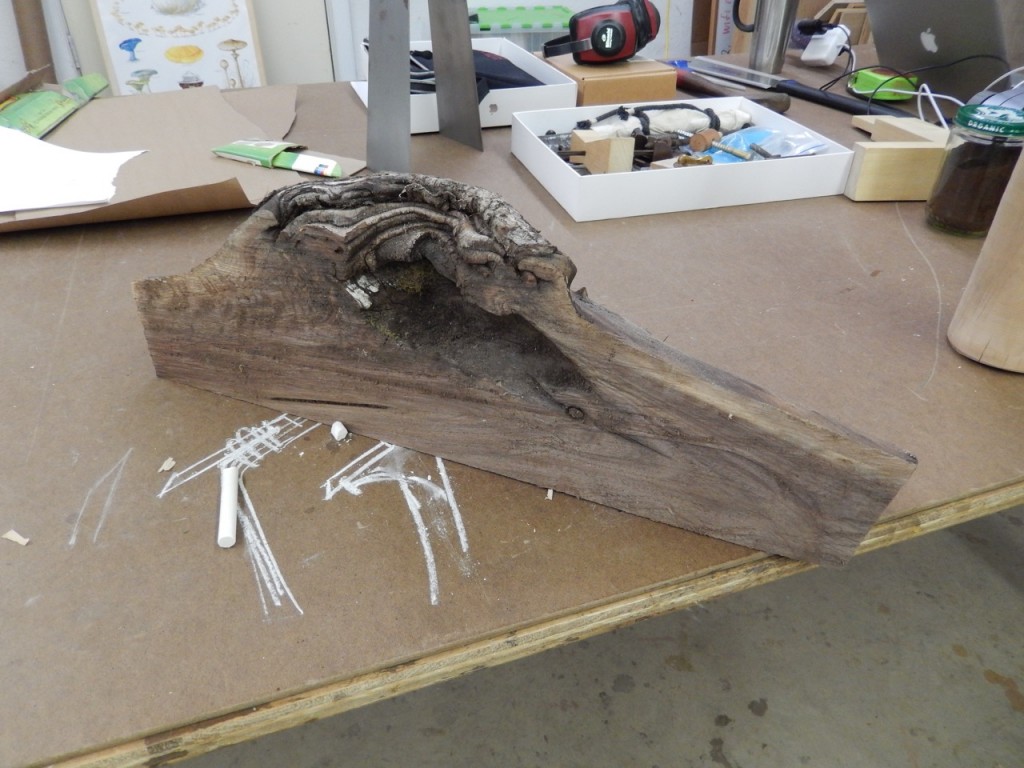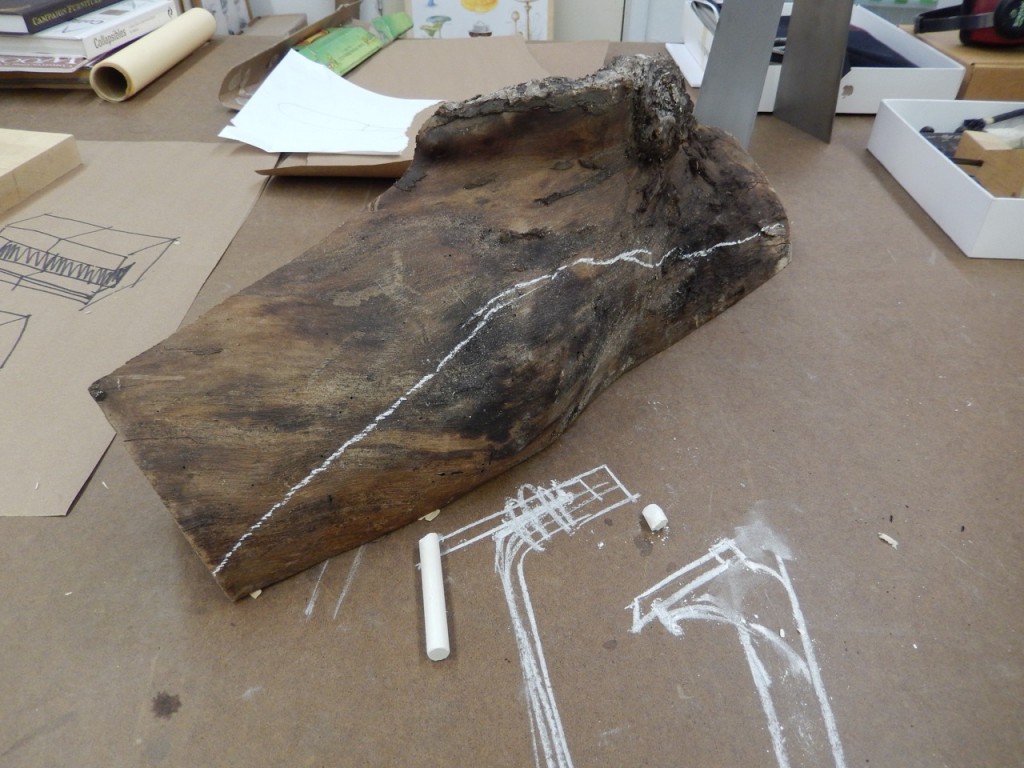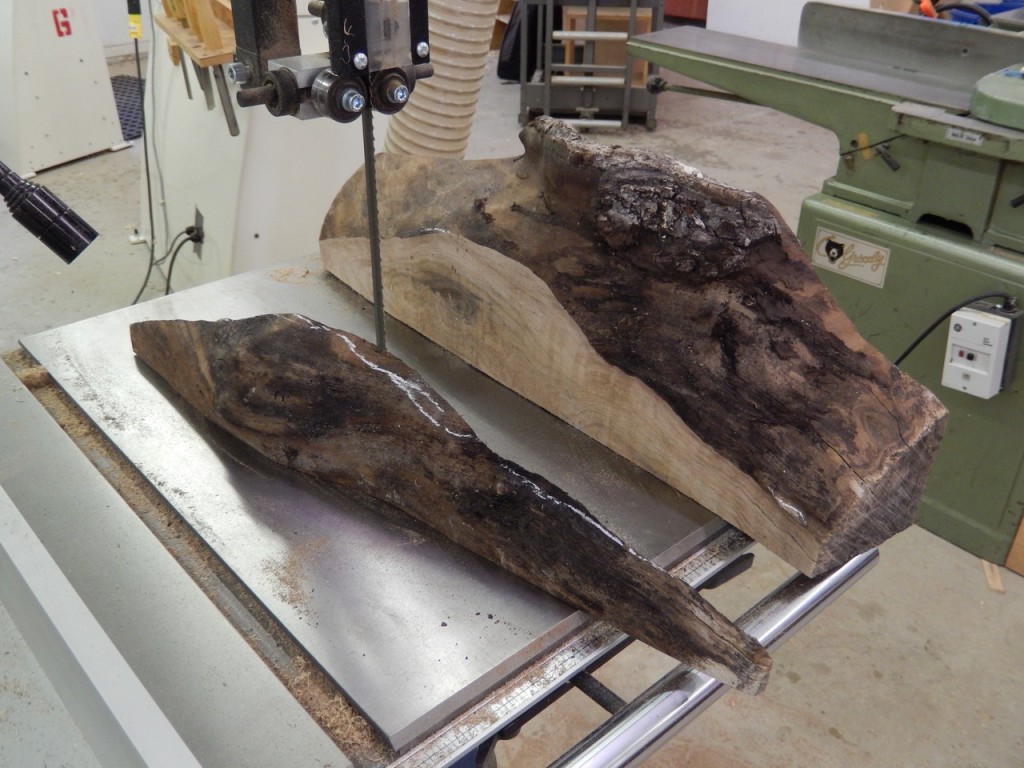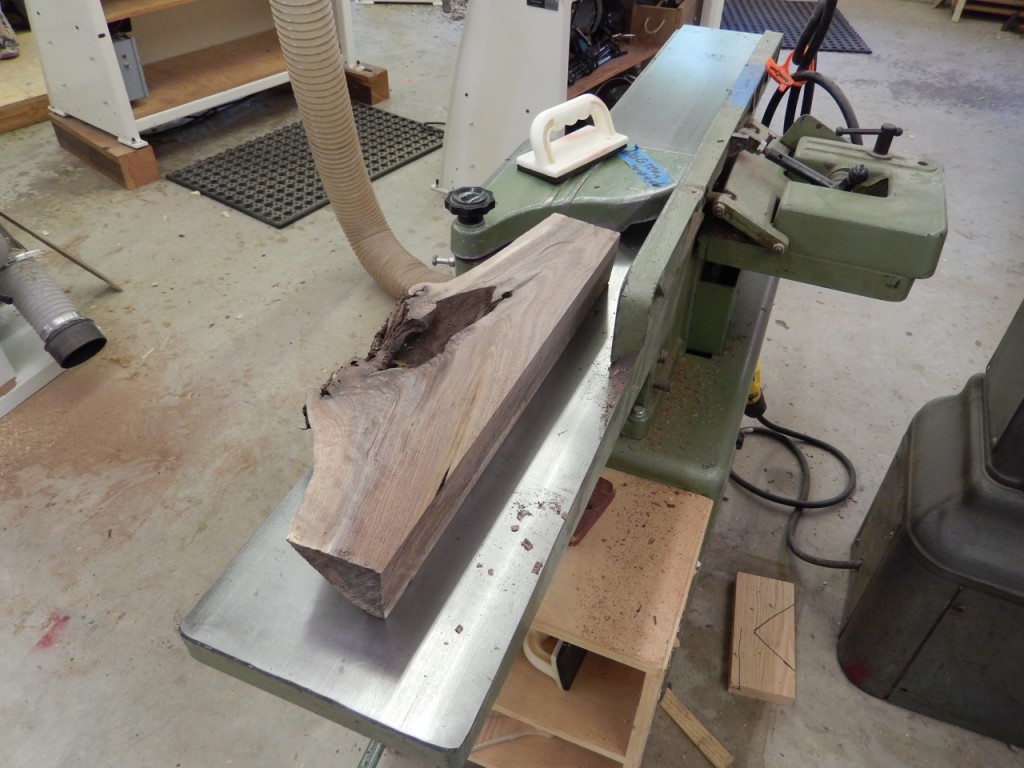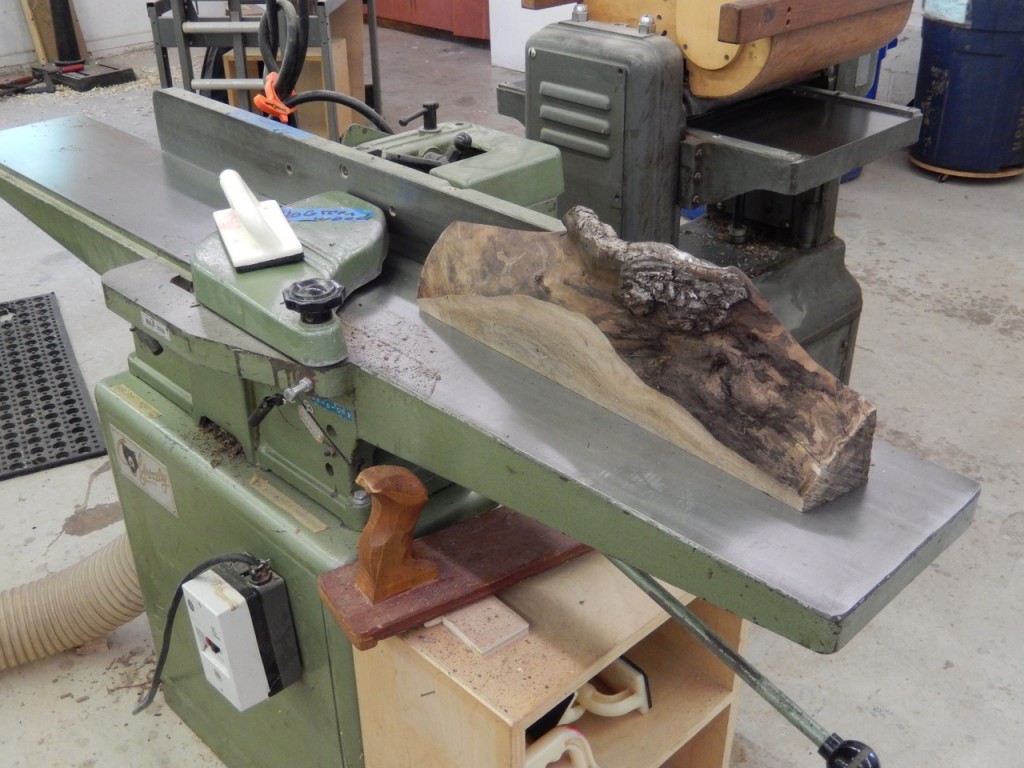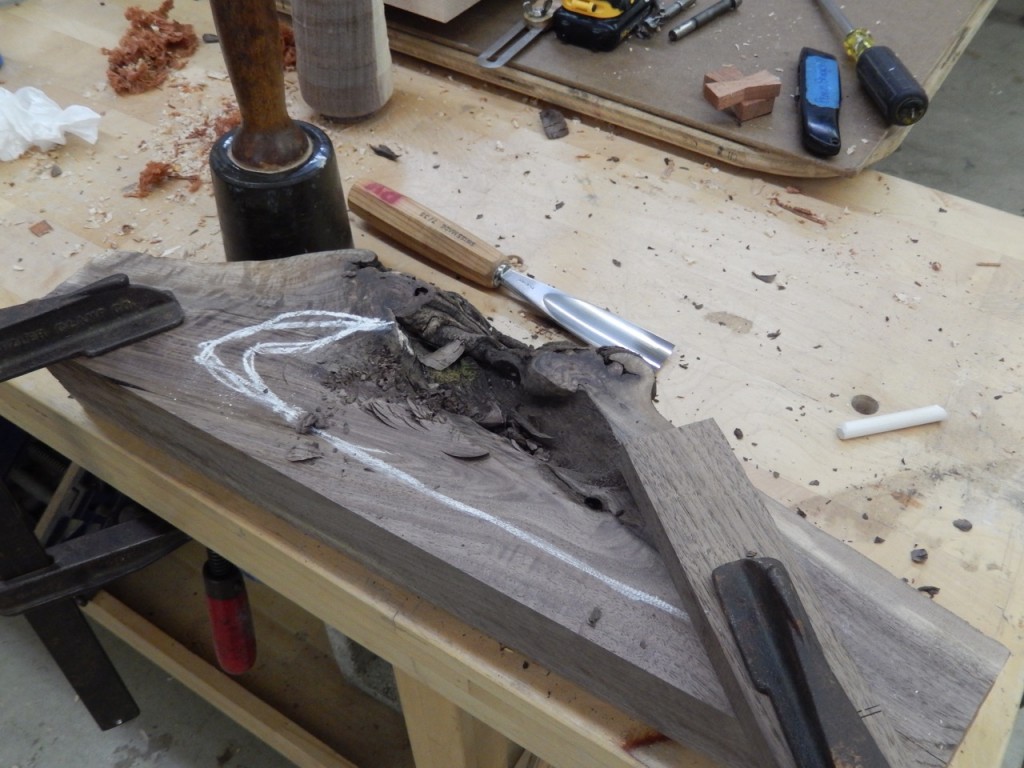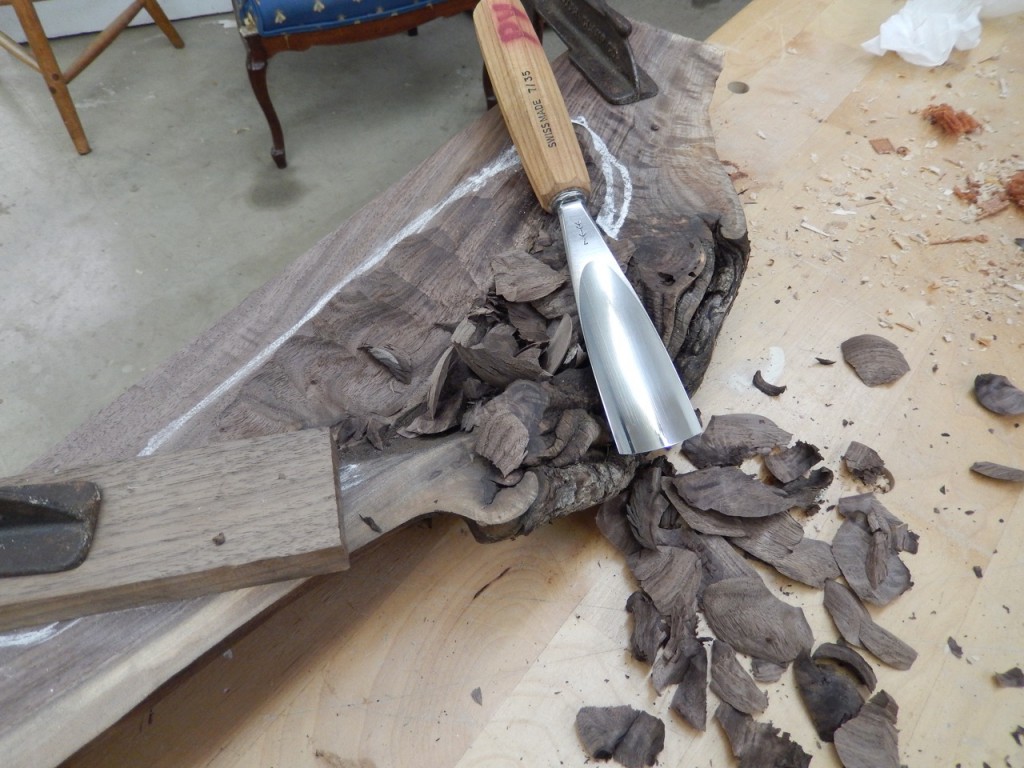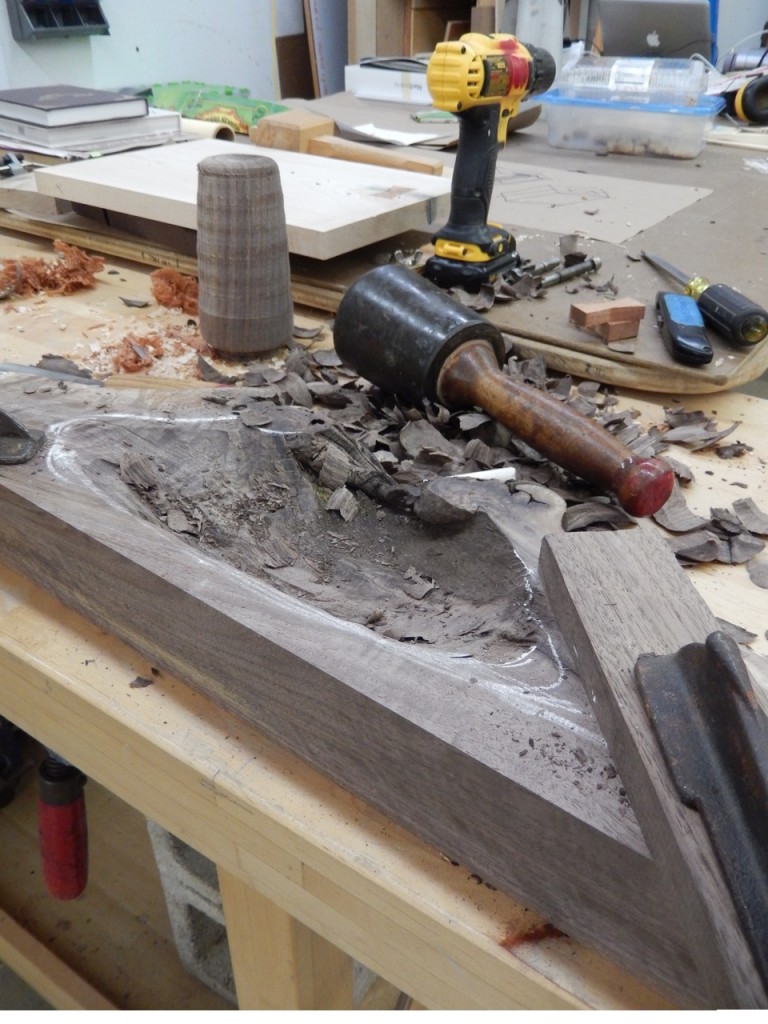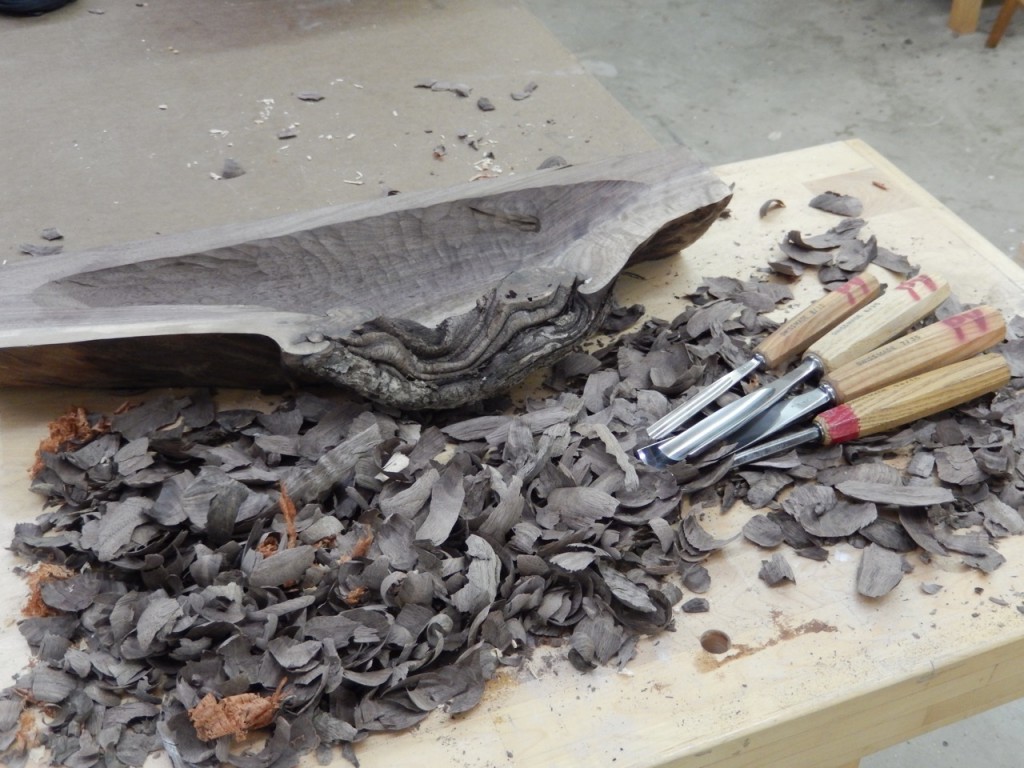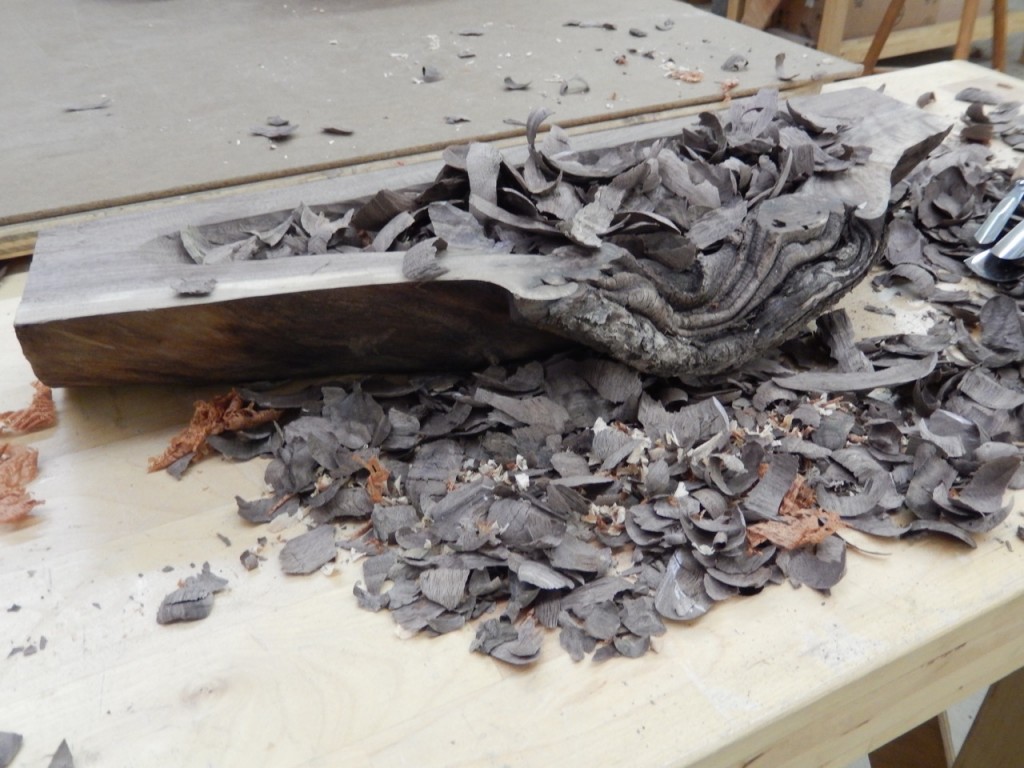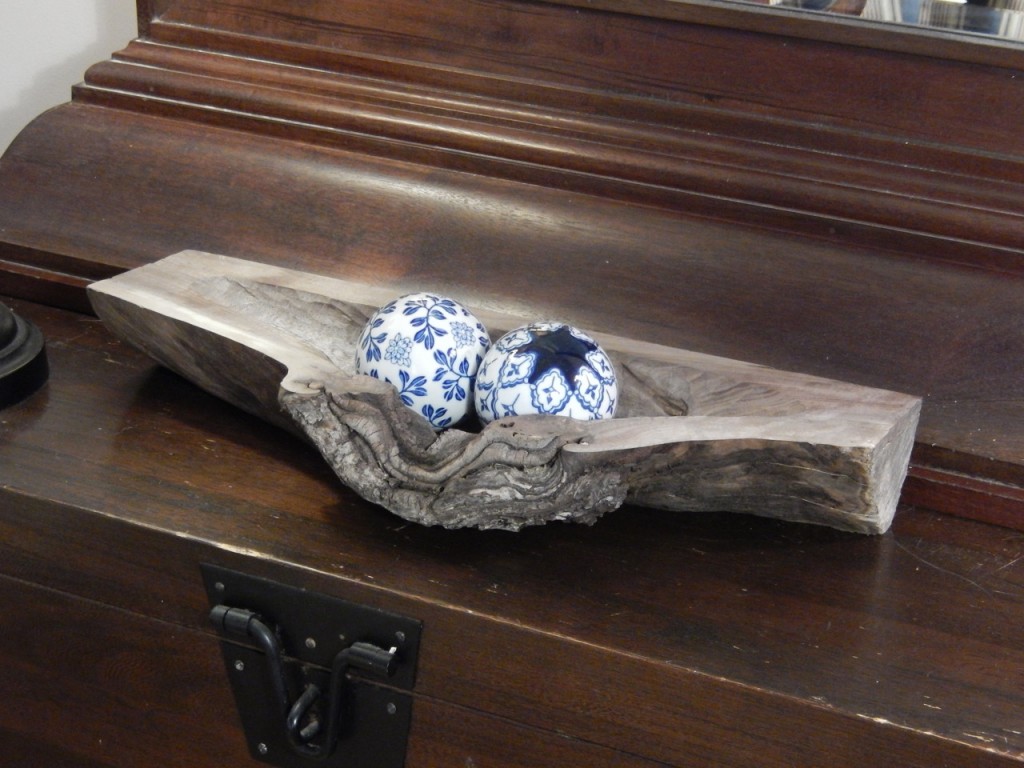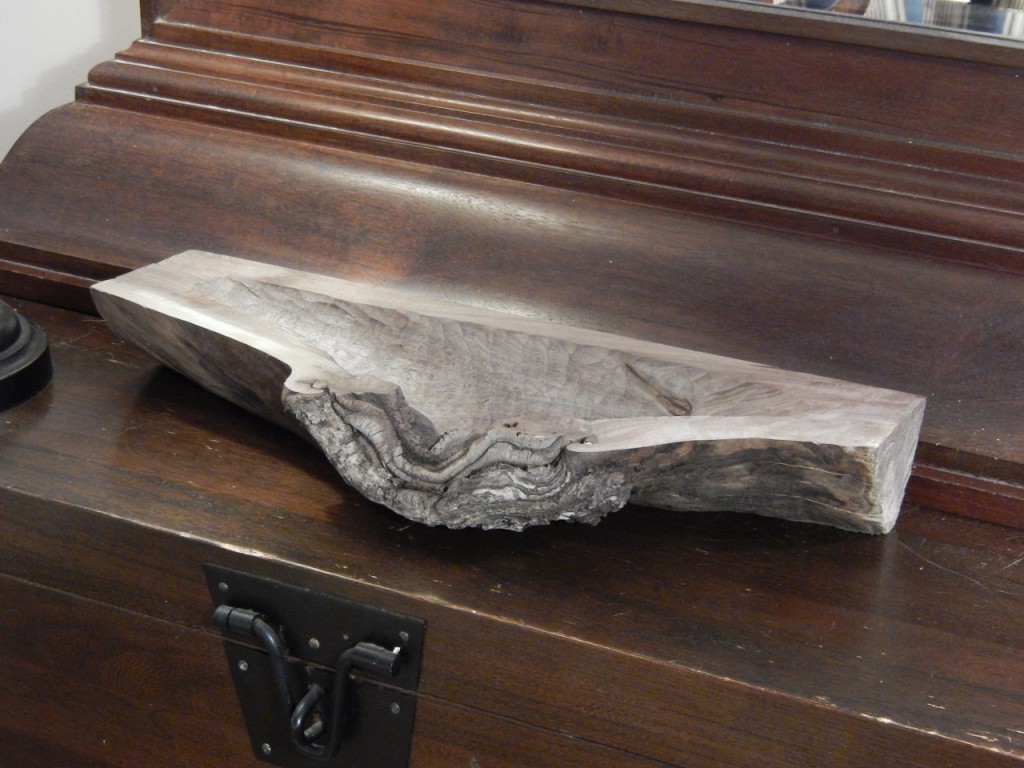We may receive a commission when you use our affiliate links. However, this does not impact our recommendations.
I recently returned home from teaching a woodworking class at Peters Valley. During the five days that I spent there, I had some time to work on a few new projects. One of them was a walnut bowl. In my work I often get inspired by an abandoned block of wood, a tossed-away furniture piece or a found piece of hardware that triggers an idea to transform the object/s or incorporate it into a new creation. Such was the case here. It all began when I noticed an odd-shaped piece of freshly cut walnut in the wood shop’s scrap bin.
The piece had long triangular proportions with a distinct lip-like apex. The lip was a reminiscent of a limb branching out from the tree trunk that had been cut (or broken off) at some point, and then gradually closed off, although not completely. That area looked organic and intriguing, perhaps even sensual, so I decided to transform the scrap into something new, hinging on the lip as an inspiration. I held the piece in my hand and contemplated what to do. Very soon it came to me that I want to turn it into a vessel, to carve out much of the walnut and let the lip area become the focal point for the new piece.
I began by marking with white chalk the line that determines the vessel’s waterline location (where the hull of a ship meets the surface of the water, and in this case the surface of the table.) Following this, I cut the waterline with a band saw then joined it, as well as the long right-angle edge of the block, at an angle of 80°, to give it a more graceful ascent.
After this, I outlined the area I decided to excavate. Then I picked up a wide #8 sweep Swiss-Made carving gouge and began gouging out the walnut.
I started at the middle of the outlined area and gradually enlarged both the surface of the excavation and its depth. Carving along the grain was fast and easy, but since my gouge was very sharp I had no problems gouging across the grain from the left and the right as needed.
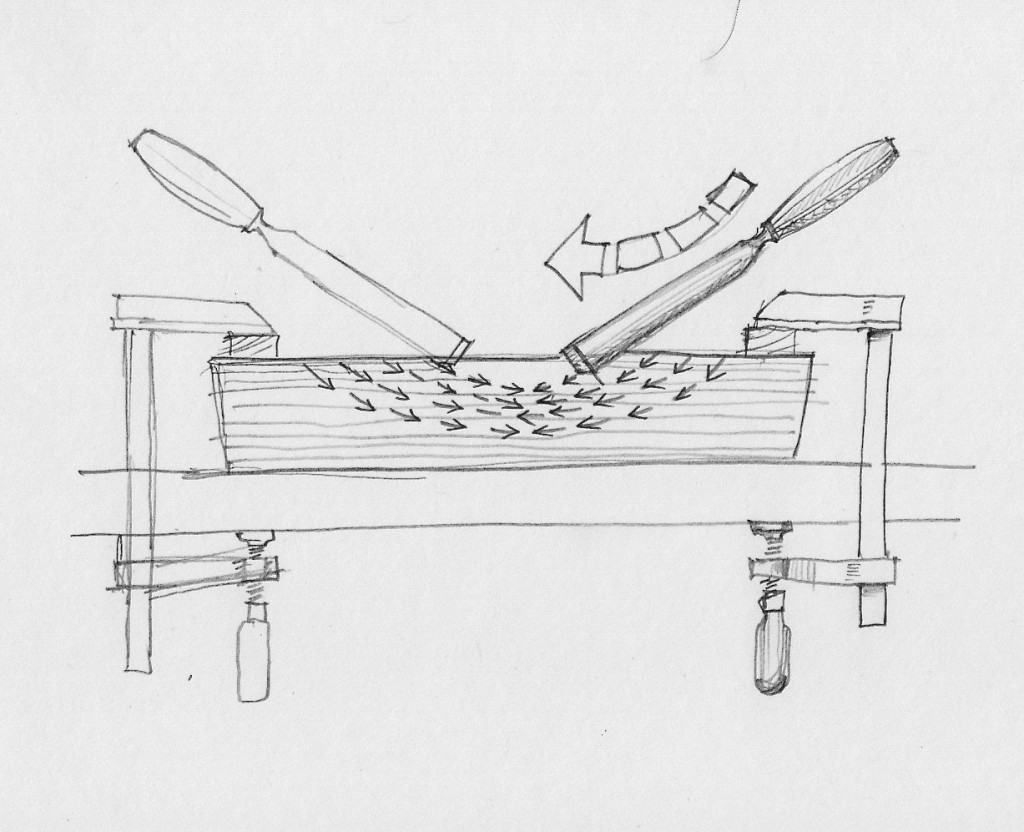
I clamped the block with two clamps and wood cauls. I started at the middle of the outlined area and gradually enlarged both the surface of the excavation and its depth.
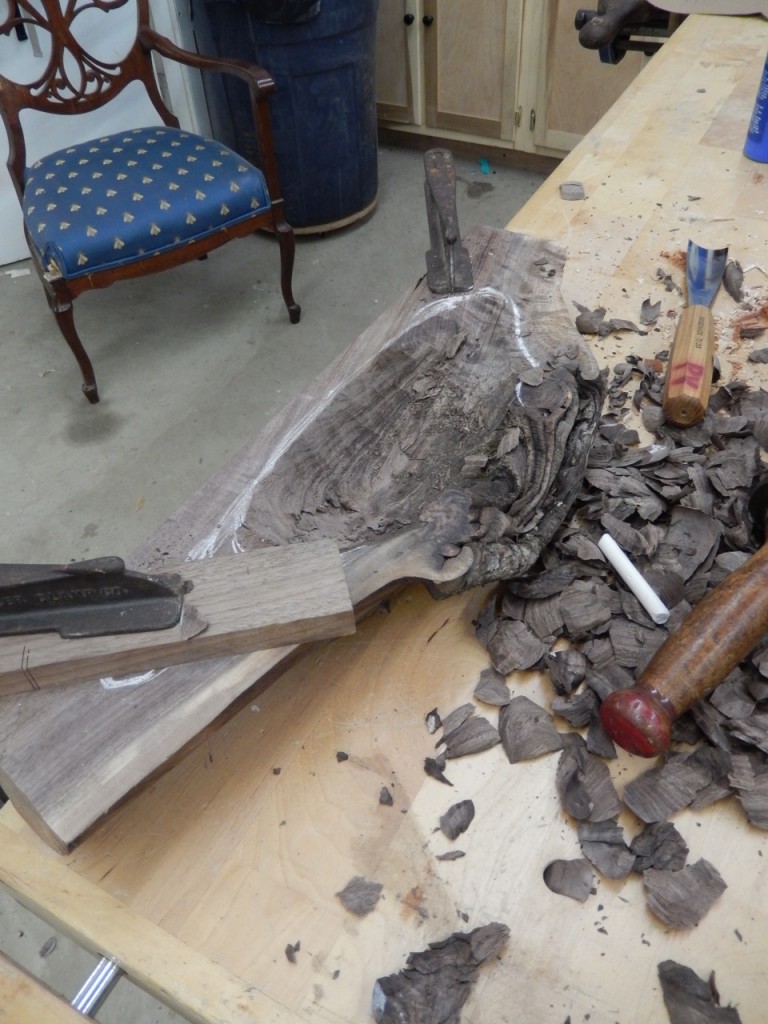 As my trench became steeper and steeper, I had to reach for a spoon gouge to help at the very bottom. I also tried a #7 gouge, but found that a #8 is better for the job because its corners tends to catch less on the excavation slopes. I had to reposition the clamps and the cauls one or two times to allow me access to all parts of the excavation. Because the bowl is elongated, and its bottom (the waterline) is long and flat, this was not at all a problem.
As my trench became steeper and steeper, I had to reach for a spoon gouge to help at the very bottom. I also tried a #7 gouge, but found that a #8 is better for the job because its corners tends to catch less on the excavation slopes. I had to reposition the clamps and the cauls one or two times to allow me access to all parts of the excavation. Because the bowl is elongated, and its bottom (the waterline) is long and flat, this was not at all a problem.
In the end, I managed to carve away most of the wood as I intended. I now plan to let the bowl acclimate to our house and finish its drying period, which will likely affect its shape. In a few months, I’ll check its moisture content, then probably will need to re-plane the waterline for flatness, followed by some final gouge work to its hull. Afterward, I will apply some flax oil as a final step, then put a check mark on this project.
If you have unusual scraps pieces, consider turning them into artistic bowls, spoons or cutting boards. Your project can be a fantastic opportunity to hone your carving skills and to transform a rejected piece of wood into an artistic eye catcher.
Here are some supplies and tools we find essential in our everyday work around the shop. We may receive a commission from sales referred by our links; however, we have carefully selected these products for their usefulness and quality.



